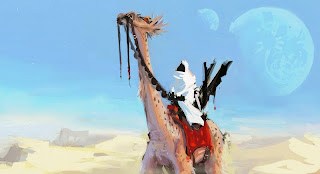The PhD subject for this studentship is "Evaluating expressive computer graphics rendering using brain-computer user interfaces". It is today a traditional exercise to view the end purpose of computer graphics techniques as photorealism, which can be defined as the generation of synthetic images that cannot be distinguished from reality. After decades of research striving for this, and given appropriate resources in hardware, modern renderers can now produce results very close to photographic images. Improved efficiency for this, as well as further advances, is still possible but at the same time there is an increasing amount of research focusing not on approximation of the real world but on the eventual purpose of the depiction and also all of the communicative aspects this can convey, thus influencing a variety of important factors. These can vary from low-level perceptual processes and emotional responses to cognitive workloads and information interpretation.
 This relatively new research field is called non-photorealistic rendering (or NPR in short) and, while most traditional computer graphics research still focuses on the production and assessment of photorealism, NPR concentrates on viewer engagement by the use of stylization, abstraction and expressiveness. These characteristics can be found on all different varieties of non-photorealistic rendering in computer graphics, as well as an assortment of different influences from 2D human artwork, which itself dates back centuries and carries inherent insights in the psychology of depiction and related observation. While non-photorealistic graphics should not be seen as competition for the challenge towards ultimate realism, it does remain an unexplored alternative that has the potential of improving several aspects of many application areas where communication of certain types of visual information using 3D photorealism can be problematic, detrimental and inefficient.
This relatively new research field is called non-photorealistic rendering (or NPR in short) and, while most traditional computer graphics research still focuses on the production and assessment of photorealism, NPR concentrates on viewer engagement by the use of stylization, abstraction and expressiveness. These characteristics can be found on all different varieties of non-photorealistic rendering in computer graphics, as well as an assortment of different influences from 2D human artwork, which itself dates back centuries and carries inherent insights in the psychology of depiction and related observation. While non-photorealistic graphics should not be seen as competition for the challenge towards ultimate realism, it does remain an unexplored alternative that has the potential of improving several aspects of many application areas where communication of certain types of visual information using 3D photorealism can be problematic, detrimental and inefficient.
This project plans to explore this potential of NPR by using new modalities that have recently been available to researchers and public combined; those of Brain Computer Interfaces (BCIs). There will be a series of experiments conducted using this hardware and a variety of contrasting NPR/photorealistic stimuli. This will provide data which for the first time are not based on subjective (self-reports, preferences etc.) or even objective data (for example task completion times etc.) but on actual brainwaves (EEGs in this particular case) that will then be interpreted and analysed in order to assess the effect of expressive rendering on human subjects in a variety of situations/application areas.
http://www.postgraduatestudentships.co.uk/node/14133.
Please email me at cgatzidis@bournemouth.ac.uk for more details. Also note this position is open worldwide to applicants with a good first degree (1st or 2:1) and/or a Masters.










